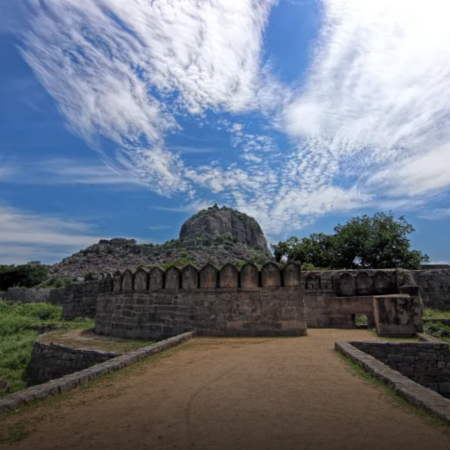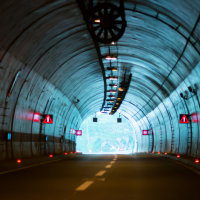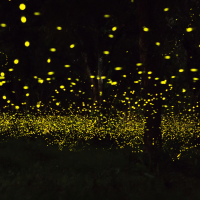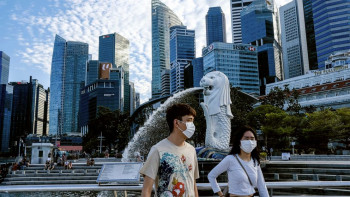
From the Sahyadris to the sea: The 12 Maratha fortresses in UNESCO World Heritage List
Date : 18th July, 2025
Prime Minister Narendra Modi has asked all Indians to visit these forts and learn about the rich history of the Maratha Empire. Here’s the full list, and a short introduction to each of these magnificent monuments.
Written by Kartika Jamdar
Prime Minister Narendra Modi last week expressed joy at the inclusion of “Maratha military landscapes of India” in the UNESCO World Heritage List. UNESCO described the inscription as including 12 major fortifications, 11 of which are in Maharashtra, and one in Tamil Nadu. “These forts,…built, adapted, or expanded by the Marathas between the late 17th and early 19th centuries [were] strategically located on coastal and mountainous terrain,… [and] formed a complex defence system supporting Maratha military dominance, trade protection, and territorial control,” UNESCO said.
In a post on X, Prime Minister Modi said the Maratha Empire is associated with “good governance, military strength, cultural pride and emphasis on social welfare”, and the “great [Maratha] rulers inspire us with their refusal to bow to any injustice”.
“I call upon everyone to go visit these forts and learn about the rich history of the Maratha Empire,” Modi said. This is a list of the forts in the UNESCO World Heritage List, and their histories in short.
1. RAIGAD
Within Raigad fort were located royal palaces, a royal mint, 300 stone houses, offices, a garrison for soldiers, a market, water reservoirs, and gardens.
2. PRATAPGAD
Built by Chhatrapati Shivaji Maharaj in 1656, Pratapgad fort is situated in the rugged terrain of the Western Ghats, 24 kilometres from Mahabaleshwar.
The fort is famous for its defensive architecture, which is regarded as a sign of strategic genius. The Upper Fort at Pratapgad served as an observation defence point with sturdy, towering walls. The Lower Fort, which was constructed along the slope of the hill, was crucial to defending the buildings inside the fort.
3. PANHALA
Panhala Fort near Kolhapur was designed to be a self-sustaining settlement. Originally built in the 12th century CE by the Shilaharas, a feudatory dynasty of the Rashtrakutas who ultimately founded their independent kingdom, the fort was occupied by the Yadavas of the Deccan, the Bahmani sultanate, the Adil Shahi kingdom of Bijapur, and finally the Marathas.
Panhala is among the largest of the Maratha forts, with a perimeter of 14 kilometres. It was a formidable military fortress with robust walls, hidden passages, bastions, secret supplies of water, and underground granaries to cope with a prolonged siege.
Panhala fort is the site of the famous Battle of Pawankhind of July 1660, which is remembered by the people of Maharashtra for the heroic stand of the great Maratha general Baji Prabhu Deshpande who, along with a handful of soldiers, engaged a large force of the Adil Shahi sultanate as Shivaji Maharaj escaped from the enemy.
4. SHIVNERI
Shivneri Fort, located near Junnar in Pune district, is the birthplace of Shivaji Maharaj. The antiquity of the fort, triangular in shape and surrounded by cliffs, dates back to the 6th century CE, when it was built as a strategic military outpost.
Shivneri was designed to withstand a prolonged siege. The seven-tier defences of the fort, intended to block enemy advances at multiple levels, are among its most striking aspects. The attackers would have to fight an uphill battle because each of the seven enormous gates served as a protective barrier.
Within the fort were the Ganga-Jamuna springs, which flow even today, and water reservoirs like Badami Talav, which ensured a steady supply of water.
5. LOHAGAD
Located near Lonavala at an elevation of more than 3,000 feet, the “Iron Fort” was originally built by the Lohtamia dynasty in the 10th century CE, and subsequently passed into the possession of the Chalukyas, the Rashtrakutas, the Yadavas, the Bahmanis, the Nizam Shahis, the Mughals, and eventually the Marathas.
Shivaji Maharaj took the fort in 1648 but was forced to give it up to the Mughals in 1665. The Marathas recaptured the fort in 1670, after which it was used as a storehouse for the loot from the Surat campaign.
Lohagad Fort is known for its four huge gates, namely the Ganesh Darwaja, Narayan Darwaja, Hanuman Darwaja, and Maha Darwaja. The “Vinchukada”, or “Scorpion’s Tail”, is one of Lohagad’s most striking features, a long, narrow, fortified spur that extends from the main fort.
6. SALHER
Salher Fort is located in Satana taluka of Nashik district, near the village of Salher. It is a significant landmark of the Sahayadri mountain range, the highest fort in Maharashtra and one of the highest in the Western Ghats, located at a height 1,567 metres (5,141 feet).
At different times in its history, Salher has been known as Gavalgarh and Sultangad. It is the site of the pivotal open-field Battle of Salher (1672 CE), in which the Maratha forces under Moropant Pingle, the first peshwa of the Maratha Empire, and Prataprao Gujar, the commander of the Maratha army, decisively defeated the Mughals led by Diler Khan, Ikhlas Khan, and Bahlol Khan.
This was the first such battlefield victory of the Marathas under Chhatrapati Shivaji Maharaj over the Mughals.
7. SINDHUDURG
The fort stands on the island of Khurte in the Arabian Sea, off the Konkan coast. It was constructed in 1664-67 by Hiroji Indulkar, the chief military engineer of Chhatrapati Shivaji Maharaj, to provide a secure base for maritime operations against the Portuguese, the British, and the local Siddis.
Sindhudurg is known for its skillfully camouflaged main entrance, which is very difficult to spot from the outside. Within the fort is a temple, one of the very few dedicated to Shivaji Maharaj himself.
8. SUVARNADURG
The “Golden Fortress” is another island fortress built by Shivaji Maharaj off Harnai port in Ratnagiri district. Suvarnadurg has a sister fortress on the mainland known as Kanakadurga; the two structures used to be connected by a tunnel, which is now unusable.
Initially built by the Adil Shahi dynasty, Suvarnadurg was captured and rebuilt by Shivaji in 1660. As an important base of the Maratha navy, it was not only a fortress but also housed a shipbuilding yard.
During Sambhaji’s reign, when the commander of the fort tried to defect to the Siddis, Kanhoji Angre, then only 18 years old, stopped him and arrested the traitor. As a reward, Sambhaji made him the commander of Suvarnadurg. Kanhoji Angre would grow up to become the chief of the Maratha navy, and one of the most renowned admirals in Indian history.
9. VIJAYDURG
One of the oldest of the Maratha forts, the “Fort of Victory” on the Arabian Sea coast in present-day Sindhudurg district was originally built by the Shilahar dynasty in the late 12th century. It was then known as Gheria.
The fort was captured by Chhatrapati Shivaji Maharaj in 1653, who renamed it after the Hindu solar year, which was then extant, “Vijay”. Vijaydurg would later be the site of fierce naval battles with the British East India Company, which would finally conquer it in 1756 after several failed attempts.
A striking feature of Vijaydurg is a hidden undersea tunnel, 200 metres long, connecting the fort with the mainland. At a short distance from the fort, up the Waghotan river, is the Rameshwar dockyard, which was used by the Maratha navy to build and repair its warships.
10. KHANDERI
Khanderi, a small island off the coast of Alibaug, was fortified by Chhatrapati Shivaji Maharaj in 1679 to secure Maratha control over the coastal waters.
After Shivaji Maharaj sent 300 soldiers and 300 labourers to build defences on the uninhabited island, the English, the Portuguese, and the Siddis, all contested his attempt at occupation. Shivaji’s admiral Daulatkhan succeeded in reinforcing the island and establishing artillery positions despite English naval attacks and the efforts by the Siddis to stop him.
In time, Khanderi would become a key maritime outpost, reflecting Shivaji’s strategy to challenge foreign naval dominance and protect Maratha interests along the Konkan coast.
11. RAJGAD
The “King of Forts” was captured by the young Shivaji Maharaj in 1647, and served as his capital for 26 years before Raigad. This was where Rajaram I, the son of Shivaji Maharaj, was born, and where his first wife, Saibai, passed away. It was also the fort where Shivaji Maharaj planned many of his military campaigns and safeguarded the wealth from the Surat campaign of 1664.
The fort houses many architectural marvels like the Padmavati Machi, which was the residence of Shivaji Maharaj, and had the Padmavati Temple. To the west stood the three-layered stronghold of Sanjivani Machi, a stunning example of military engineering that was intended to repel enemy invasions.
12. GINGEE/ JINJI (Tamil Nadu)
Gingee Fort is located in the Villupuram district of Tamil Nadu and is considered one of the most formidable fortresses of peninsular India. Like many other forts, Gingee has served as the stronghold of several dynasties, such as the Vijayanagar Nayaks, the Bijapur Sultans, the Mughals, the Marathas, the French, and the English.
Perched atop three rocky outcrops — Rajagiri, Krishnagiri, and Chandrayandurg — the complex is made up of interconnected citadels fortified with ramparts and deep moats that create a nearly seamless triangle of defence.
Noteworthy interior structures include the multi-storey Kalyana Mahal (marriage hall), granaries, prison cells, and a temple dedicated to the local deity Chenjiamman. It has reservoirs and natural springs, which were critical in sustaining the fort during prolonged sieges.


